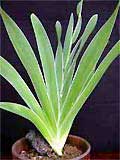 In traditional Chinese medicine, the plant commonly known as Rẻ quạt is referred to as Xạ can, which is highly effective in treating sore throats. Additionally, it serves to expel phlegm, soothe coughs, and treat upper respiratory tract infections.
In traditional Chinese medicine, the plant commonly known as Rẻ quạt is referred to as Xạ can, which is highly effective in treating sore throats. Additionally, it serves to expel phlegm, soothe coughs, and treat upper respiratory tract infections.
Xạ can, scientifically known as Belamcanda sinensis (L.) DC, belongs to the iris family. This perennial plant grows wild; its rhizome spreads along the ground. The leaves grow upright, with the leaf sheaths overlapping and spreading out like a fan. The leaves are lanceolate, measuring 20-40 cm in length and 1.5-2 cm in width. The flowers have long stems of 20-40 cm, branching out into several clusters, each cluster bearing flowers. Each flower has six petals that are a bright orange-yellow with purple spots. The fruit is a capsule, and the seeds are glossy black-green spheres, about 5 mm in diameter.
The rhizome is referred to as the Xạ can tuber; it is harvested in winter, with the smaller roots cut off, washed clean, and then dried for medicinal use.
The alcohol extract of Xạ can has been shown to inhibit strains of dysentery bacteria, Staphylococcus aureus, and enterococci. Xạ can exhibits both acute and chronic anti-inflammatory effects. The total flavonoids from Xạ can reduce the activity of polyphenol oxidase and other enzymes involved in both acute and chronic inflammation.
In traditional Chinese medicine, Xạ can is classified as a heat-clearing and detoxifying herb. It has a bitter taste and a cold nature, affecting the lung and liver meridians, and is used to treat sore throats, expel phlegm, and soothe coughs. Xạ can can be slightly toxic, so it is not recommended for individuals with a cold stomach or spleen deficiency, children under 7 years old, or pregnant women. Below are some medicinal recipes that feature Xạ can as the main ingredient:
Treatment for Acute Pharyngitis: Xạ can 10 g, Cát cánh 10 g, Hoàng cầm 10 g, Cam thảo Bắc 6 g. Grind to a coarse powder. Decoction for drinking.
Treatment for Upper Respiratory Tract Infections, Pharyngitis, and Tonsillitis (Acute and Chronic), use one of the following recipes:
– Xạ can 10 g, Sâm đại hành 10 g. Decoction for drinking.
– Xạ can 10 g, Cát cánh 10 g, Chần bì 6 g. Grind to a coarse powder and then decoct for drinking.
The dosage for children aged 7 to 12 years is half that of adults for the above recipes. From age 13 and older, use the adult dosage.
Treatment for Cough and Cold-Induced Cough: Xạ can 10 g, Bán hạ 10 g, Tử uyển 10 g, Khoản đông hoa 10 g, Đại táo 10 g, Sinh khương 10 g, Ma hoàng 7 g, Ngũ vị tử 3 g, Tế tân 3 g. Decoction for drinking.
Dr. Trần Xuân Thuyết, Medicines & Health


















































